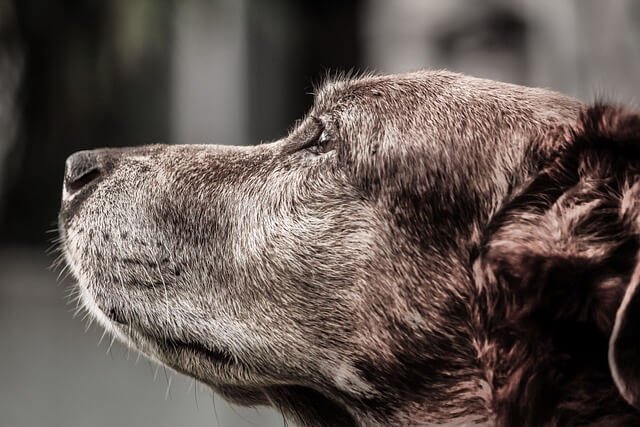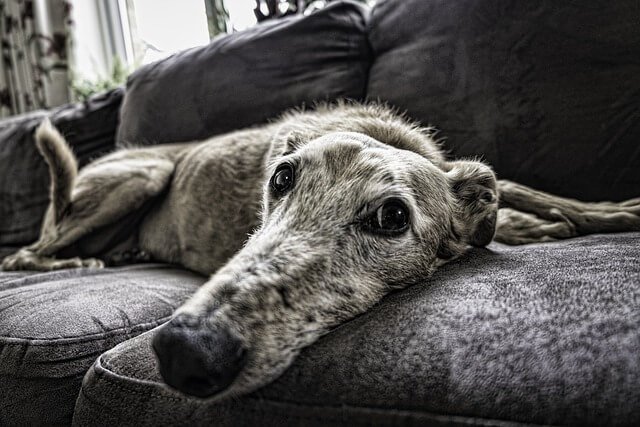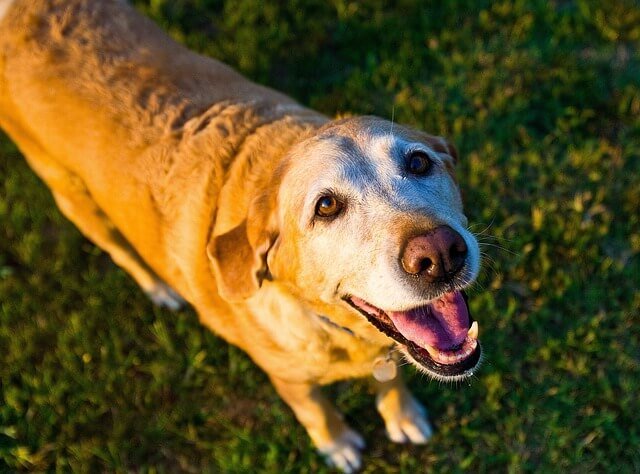How To Stop Your Dog From Going Grey
Does your dog have any grey hairs yet? Nelly does!
Just like in humans, your dog turning grey is a sign of ageing. Most dogs begin to turn grey when entering their senior years - or earlier in some cases.
There are a couple of reasons this happens.
The most commonly discussed factor is anxiety. This stems from a 2016 study which showed that dogs with anxiety or under stress are more likely to go grey early.
This matches up with our experience with Nelly. She had very few grey hairs up until she was 10 years old, at which point she was attacked by off-leash dogs and ended up in ICU for 10 days.
Definitely quite stressful! And the grey hairs sprouted almost immediately.
But it got me thinking.. Why did she not have any grey hairs before this? At 10 years old she certainly wasn’t a young dog, and up until this point she had beautiful black glossy fur. (She still does - just with a distinguished grey nose now)
Amino acids prevent premature greying
There is some interesting recent research which suggest that nutrition plays a bigger part in keeping your dog looking young than previously thought.
One study from 2018 showed that healthy Labradore Retrievers fed higher levels of tyrosine had significantly less off-black colouration that those with lower levels. Tyrosine is an amino acid that is a precursor to thyroid hormones, which regulate the metabolism. It’s found in beef, chicken, fish, pumpkin seeds and spirulina.
Feeding a raw food made with genuinely quality ingredients (like Whoa Nelly!) will contain high amounts of these ingredients in a highly bioavailable form.
Bioavailability is an important concept here. You can add a synthetic nutritional supplement to food, but if it is not absorbed by your dog when they eat it they will not receive any benefits. Processed food like kibble is made under high temperature and pressure, which reduces the bioavailability of many nutrients - including tyrosine which degrades under heat.
Which is why it’s ALWAYS best to feed raw!
Other nutrients that effect hair colouration
It’s not just amino acids that impact going grey though. A 2017 study found that feeding Beagles a copper deficient diet caused grey hairs from *3 months* of age (!!!).
Zinc deficiency was also shown to reduce the pigmentation of hair in Labradores.
This is echoed by a recent 2021 study which suggests that dog hair pigmentation is closely correlated to major and trace mineral levels in the blood. Broadly speaking, dogs with more pigment in their coat are generally healthier than those with faded, grey, brittle hair.
Fat amount and balance is also important. Having enough Omega-3 fatty acids in the diet, in the optimal ratio with Omega-6 fatty acids is critical to having healthy skin and hair.
Ideally dogs should be eating raw food with around 10% fat and a Ω3 : Ω6 ratio of 1 : 3.
How to stop your dog going grey
There are two main ways to stop your dog from prematurely ageing. Feeding a properly balanced, raw diet is the best way to make sure your dog is receiving all the nutrition they need in a form they are able to absorb.
I know this is my advice for just about everything but there’s a reason for it! Getting the fundamental nutrition right is 95% of the battle for most dogs. That means feeding a properly formulated diet, made with human grade ingredients, containing balanced fats and minerals, and minimally processed (ie. raw).
The other factor is to reduce anxiety in your dogs life. Having a daily routine where they know what to expect can help. Daily walk, play, food should all happen with regularity so they know what to expect. Make sure you are providing enough mental stimulation. In more extreme cases of anxiety, a vest like a Thundershirt can also help to keep them calm.
It’s important to note that just like in humans, with enough age going grey is an inevitability. But if you are like us, you want your dog to be as healthy and young for as long as possible. The research suggests that feeding a high quality diet and managing stress levels is the best way to achieve this.
It has certainly worked for us 🐾



